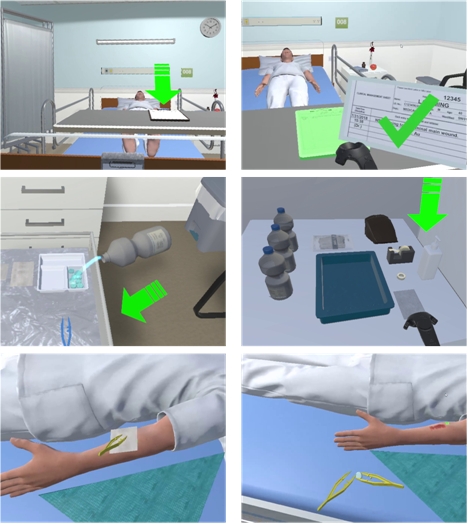Background: Wound care is an essential nursing competency, where dressing change is an important component. Compliance with aseptic procedures and techniques is necessary to reduce the risk of infection. Proficiency in the skills can be developed through adequate practice. In this paper, use of virtual reality is proposed to provide more practice opportunity. An immersive virtual environment is developed to simulate the steps of changing a simple wound dressing.
Methods: Two methods were used to interactively simulate the procedures of wound dressing in VR using generic computer and immersive VR device respectively, namely, desktop simulator (DTS) and immersive simulator (IMS). They were evaluated in a study with 30 undergraduate nursing students. Knowledge test (KT), user acceptance questionnaire (UAQ) and system usability questionnaires (SUQ) were administered after using the two simulators. A crossover design was adopted where half of the participants used DTS first and followed by IMS. The order was reversed for the other half.
Results: The order of use of the simulators did not affect the results. The mean KT scores after using DTS and IMS were similar. The mean UAQ and SUQ scores for IMS were relatively higher than DTS. Comments on both simulators were positive, with IMS favored for higher level of realism, immersion and interactions, and DTS for being more convenient to use.
Conclusion: Use of VR simulation, in desktop or immersive form, can potentially promote engaging learning experience and facilitate clinical training of wound dressing.
Publications
- K.S. Choi. Virtual reality simulation for learning wound dressing: Acceptance and usability. Clinical Simulation in Nursing, vol. 68, pp. 49-57, July 2022. [doi]
- K.S. Choi. Virtual reality wound care training for clinical nursing education: an initial user study. The 26th IEEE Conference on Virtual Reality and 3D User Interfaces, Osaka, Japan, 23-27 March 2019. [doi]

